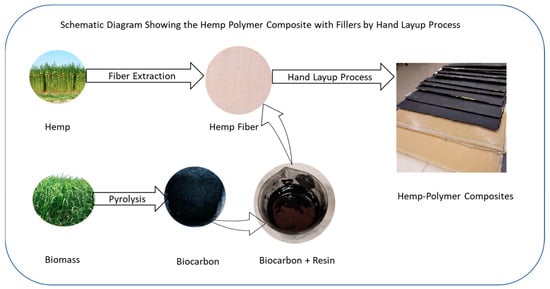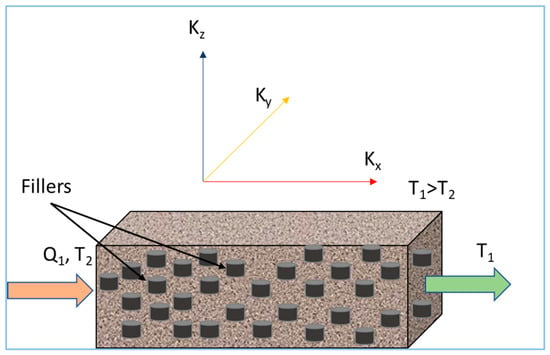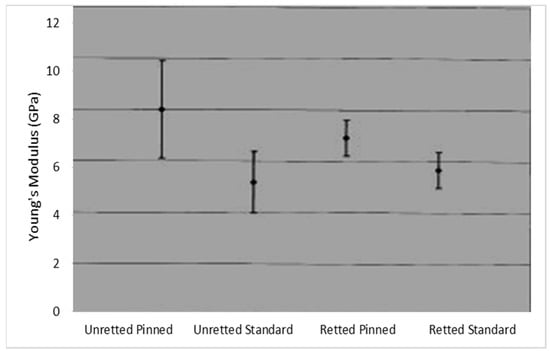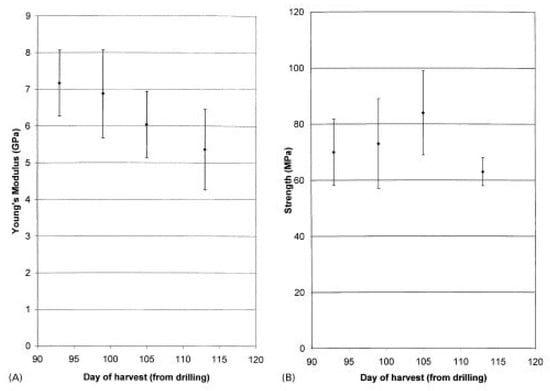Since the complete replacement of fossil-based products is not feasible due to cost and performance, bio-based composite materials may have bio-based polymers, bio-based reinforcement, and fillers, or both, while having other ingredients from fossil fuel sources. As for reinforcement, nature can offer wooden and non-wooden fibers (bast, leaf, seed, core, grass, and reed) as composite reinforcements. Cellulosic non-wooden fibers offer tensile strengths ranging from 80 MPa for sisal to 938 MPa for ramie. Applications of biocomposites in structures and infrastructures have proven useful in terms of their moderate mechanical properties, lower cost, availability, biodegradability, and environmental considerations.. Hemp has been used in composite materials for centuries now. However, it presents challenges; hemp fibers contain a high level of moisture, as plant-based sources are hydrophilic in nature. Its mechanical, thermal, and physical properties, such as tensile strength, wettability, flammability, and swelling, vary. These properties change with changes in plant anatomy, fiber processing conditions, growth conditions, and experimental methods.
- hemp fiber
- biofillers
- acoustic properties
- Biocarbon fillers
- Hemp composite
- Mechanical properties
- Thermal conductivity
- Polymer composite
- Sustainable material
- Green products
1. Biofillers in Biocomposite Materials

2. Role of Fiber in Resultant Material Properties
3. Hemp and Biocomposite Materials for Acoustic Properties
| Ref. | Materials | Method | Findings |
|---|---|---|---|
| [69] | Hemp crop residue + Reclaimed crushed tire CT) + LDPE/PP. | The impedance tube method according to ASTM E1050-12. | The maximum sound absorption value of 0.68 at 1650 Hz for a 80% hemp hurd, 10% coarsely crushed tire, and 10% PP composite was found. A comparison showed whole stalk hemp (WSH) composites are better at damping acoustics than the rest; this could be due to the high porosity of WSH composites. The 30% WSH, 60% CT, and 10% LLDPE composite had the highest sound-absorption coefficient (α). |
| [70] | Luffa fibers w/o surface treatment + epoxy resin. | Absorptivity was measured using the impedance tube as per ASTM E1050-12 and the transmission loss levels as per ASTM E2611-17. | The value of α changed with the change in the fiber-matrix volume fraction. α decreased when the volume fraction of resin was further increased after a specific fiber-matrix ratio. Similarly, the transmission loss increased by increasing the matrix fraction. The transmission loss value of luffa composite with a 1.5 matrix volume fraction was found to be similar to that of a cement and glass plate. |
| [90] | Pinecone char (PCC)/China Poplar char (CPC) + Epoxy resin (ER) (10, 20 30 wt.%) + Poly pox Hardener 043 + (2,4,6-tris) dimethyl amino-methyl phenol catalyst. |
Velocity was calculated from the equation of motion, and the acoustic impedance was calculated as Z = ρ.VL, in which ρ is the material density and VL is the longitudinal wave velocity. | The VL of the ER/char composites was higher than that of pure ER. The VL of the ER/CPC composites ranged from 2754 to 2811 m/s2, while that of the ER/PCC composites ranged from 2726 to 2798 m/s2. The biochar increased the acoustic impedance in all composites as compared to the pure ER. The velocities showed a linear increment with an increasing biochar concentration (PCC and CPC) in the ER/BC composites up to 30% due to the increased filler density and reduced inter-atomic spacing among the fillers. |
| [85] | Isophthalic unsaturated polyester resin + Methyl ethyl ketone peroxide (1 wt.%) and cobalt octoate (0.9 wt.%) + (Carbon fiber/Glass fiber/Hemp fiber). | Longitudinal and flexural free vibration tests were performed to analyze the acoustic response using the fast Fourier transform (FFT) method on MATLAB. A standard water absorption test was performed. | The glass-fiber-reinforced composites showed an acoustic performance similar to that of walnut wood. The carbon fiber-reinforced composite showed improved acoustical properties. The surrounding atmosphere’s water content had a neglible effect on the quality of sound from instruments made from carbon fiber and glass fiber composites. |
| [73] | Pinewood fibers/Rice straw pulp + Polyurethane (PU) + Acetone/Acetic ether. | The impedance tube method was used according to ISO E10534-2. Sound frequencies from 90 to 7000 Hz were analyzed. | Void volume is a critical factor in damping sound. Wood fiber and straw fiber biocomposites have good sound-absorbing properties due to their better sound-absorbing behaviour over a wide frequency range (250 to 7000 Hz). The increase in fiber thickness lowered the value of the sound absorption coefficient (α). The compact-structure wood-fiber biocomposite offered a higher value of α compared to that of the straw fiber biocomposite of a similar thickness. |
| [91] | Polyethylene terephthalate (PET)/Lightweight microfibers/Blown plastic fibers/Glassfiber/blends of cotton or plastic fibers (shoddy) + Polyester/Polypropylene. | The sound absorptivity of the composites was determined according to ASTM E1050. | α was indirectly proportional to the fiber diameter, and the absorptivity increased with the increase in the specific flow resistance per unit thickness of the sample up to 1000; beyond this resistance value, α started to decrease. The tortuosity mainly influenced the location of the peaks, and the porosity and flow resistivity affected the size of the waves. Having a higher fiber surface area and a lower fiber size increases the value of α. Less-dense materials absorbed the sound of low frequencies (500 Hz), and highly dense composites absorbed waves above 2000 Hz. The air gap increased α for medium and higher frequencies. Attaching thin films such as PVC increased the α for low- and mid-frequency sounds. |
| [92] | Biochar + (sand/coarse aggregate + cement powder in 3:1) + water. | The sound absorption coefficient (α) was determined using a Kundt tube as per ISO 10534-2. The noise reduction coefficient (NRC) was calculated as an average value. | The higher sound energy dissipation within the interconnected pore networks in the concrete by adding biochar caused higher sound absorption coefficients. Biochar showed similar effects to that of the activated carbon. Due to the high surface area and porosity of the activated carbon, the concrete with a higher amount of biochar resembled the concrete with a lower amount of activated carbon. The noise reduction did not change with the change in the carbon filler amount in the samples whereas it substantially affected the sound absorptivity of the final material. |
| [74] | 7:3 wool and bicomponent (polyester Core with Co-polyester Sheath polyester: 7:3 cotton and polyester. 7:3 acrylic–cotton–polyester and polypropylene. 9:1 polyester and low melt polyester. 7:3 polyester and polyamide. Polyester only. meta-aramid only. |
Sound absorption was measured at frequencies between 50 Hz and 6.4 kHz according to ISO 10534-2 and ASTM 1050-98 standards. | The nonwoven composite from a cotton and polyester mixture was better than a wool and bicomponent polyester composite in terms of sound absorptivity. Adding acrylic and polypropylene fibers into the mixture improved the absorptivity of sounds with low- to mid-range frequencies. The composite with microfibers was found to perform better in sound absorption due to its low weight and high thickness. |
| [75] | Poplar wood fiber + Polyester fiber (PET) in 3:1 + Isocyanate adhesive (solid content), resin, foaming agent in 50:6:4. | Sound absorptivity was measured by the impedance tubes method in the frequency range of 50–6400 Hz for every 4 Hz. | The airflow resistivity of the wood fiber/polyester fiber composite up to a certain value was inversely proportional to its sound absorptivity. When the airflow resistivity was further reduced below the optimum value (1.98 × 105 Pa⋅s/m2), the value of α decreased. Additionally, the value of α at low frequencies increased with the increase in the cavity width. |
| [77] | Coir + polyester. | The noise absorption coefficient (NAC) was measured by the reverberation room method, and the transmission loss index was measured as per ISO 717-1. | The coir fiber with a perforated panel had a higher NAC at 500 to 2500 Hz, and beyond that, the coir fiber without a board had a higher coefficient. The coir fiber as a reinforcement in polyester increased the sound absorption coefficient and transmission loss index value of the composite material. |
| [78] | (Polyol + isocyanate 1:1) + Tea leaf fiber waste | The sound absorptivity of the material was measured at 50 to 6300 Hz; the waves were based on a two-microphone transfer-function method according to ISO 10534-2 and ASTM E1050-98. | Soft foam was found to absorb low- and mid-to-high-range frequencies of sound better than rigid foam; the maximum absorption was found to be at higher frequency ranges. Adding tea leaf fibers into the soft foam increased the sound absorption coefficient by 50%. Adding tea leaf fibers into the rigid form improved its sound-absorbing property in all sound frequencies. |
| [79] | (Treated rubber/Meranti wood dust) + (Polyol + Isocyanate) polymer foam. | The sound absorption coefficient and the normal specific acoustic impedance ratios of materials as per ASTM E1050 at a frequency range of 100 to 6000 Hz were studied. | The filler loading concentration and particle size in polymer foam influenced the α. The frequency absorption level increased from 2800 Hz to 3700 Hz from light to heavy filler loading composites. The noise reduction coefficient (NRC) was inversely proportional to the wood particle size. The higher the pore size, the lower the NRC. |
| [80] | Isotactic polypropylene (PP) + lignocellulosic materials derived from hemp, flax, beech, pine, rapeseed straw was used as fillers. | The acoustic standing wave method was applied to determine a material’s sound-absorption power at 1000, 1800, 3000, 4000, 5000, and 6300 Hz. | With a hemp filler, the value of the coefficient (α) increased rapidly up to about 25% when the frequency was increased from 3000 to 6300 Hz. For other biofillers, a higher absorptivity was observed at the frequencies of 3000 Hz to 4000 Hz. The inclusion of a biofiller in pure polypropylene increased the absorption of sound above 3000 Hz by about one-fifth. |
| [81] | Concrete samples: polystyrene granules, polyethylene terephthalate (PET) granules, treated corn cobs, and sunflower stems, and small balls made of sheep wool. | The acoustic absorption was calculated based on the acoustic interferometer technique (Kundt tube). The effect of the thickness was studied. | The sound-absorption coefficients of the composites were considerably higher than the values for conventional concrete. Among the 40 mm samples, the corn-cob composite was the best sound-absorbing material with a noise-reduction coefficient (NRC) of 0.193. For the 80 mm specimens, it was the PET concrete with an NRC of 0.285. The NRC increased by about 1.5 times when doubling the thickness of the sample. Additionally, density and the porosity were the other influencing factors on the sound absorptivity. |
| [82] | PU (Polyol + isocyanate at 1:1) + Cotton/wool/bamboo (approximately 1 mm long and weight ratios 4%, 8% and 12% for each). | The materials’ sound absorptivity was measured as per ISO 10534-2 and ASTM E1050-98 standards. | PU containing 12% cotton fibers resulted in a value of almost 0.8 for sound absorptivity above 2 kHz, which is four times that of pure PU foam. A composition of 4% wool fibers in PU foam offered better sound absorptivity compared to that of virgin PU. PU foam and wool fiber mixed composites result in a maximal sound absorption in most frequencies. Cotton-fiber-blended PU foam absorbs more sound than wool fiber mixed composites. PU containing 4% bamboo fiber foam showed a sound absorptivity of 0.7, which is higher than that of pure PU in the same frequency range. PU with a bamboo fiber absorbed sound more efficiently as compared to the PU with a wool fiber composite. The sound absorptivity was directly proportional to the cotton content in the PU, and indirectly proportional to the bamboo and wool content in the PU. |
4. Hemp and Biocomposite Materials for Thermal Properties

5. Hemp Composites for Mechanical Properties



This entry is adapted from the peer-reviewed paper 10.3390/jcs6120373
